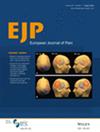Subgrouping People With Acute Low Back Pain Based on Psychological, Sensory, and Motor Characteristics: A Cross-Sectional Study
Abstract
Background
Clustering helps identify patient subgroups with similar biopsychosocial profiles in acute low-back pain (LBP). Motor factors are common treatment targets and are associated with disability but have not been included in acute LBP cluster development. This study aimed to identify subgroups of individuals with acute LBP based on motor, sensory and psychological characteristics and to compare these subgroups regarding clinical outcomes.
Methods
Ninety-nine participants with acute LBP were recruited, and motor (bending range of motion [ROM], flexion relaxation), pain sensitivity (pressure-pain thresholds, temporal summation of pain) and psychological factors (pain catastrophising, kinesiophobia, self-efficacy) were measured, along with pain, disability and demographics.
Results
Principal component analysis accounted for 66.03% of the variance. Four component scores were entered in a hierarchical linear clustering model, deriving 3 subgroups (‘mild features’ n = 39, ‘sensorimotor’ n = 35 and ‘psychomotor’ n = 25). Between-cluster comparisons revealed significant differences in motor, sensory and psychological variables (p < 0.05). Sensorimotor and psychomotor clusters had higher flexion–relaxation ratios (mean difference: > 0.2), greater disability (mean difference: > 7/100) and smaller ROM (mean difference: 7 cm) compared to the ‘mild’ group. The sensorimotor cluster mostly exhibited higher temporal summation of pain (mean difference: > 1.3/10) and lower pressure-pain thresholds (mean difference: > 1.2 kg/cm2) than ‘mild’ and psychomotor clusters. The psychomotor cluster showed higher kinesiophobia (mean difference: > 6/44) and pain catastrophising (mean difference: > 12/52) than ‘mild’ and sensorimotor groups.
Conclusion
Findings indicate 3 subgroups, suggesting that motor factors may add granularity to acute LBP clusters. Stratified care based on these subgroups may help refine treatment pathways for acute LBP.
Significance Statement
Including motor factors in cluster development adds a clinically relevant metric to describe people with acute LBP and generates insight into underlying mechanisms of motor adaptation. Longitudinal testing is required to see if these subgroups are differentially related to short- and long-term pain and disability.


 求助内容:
求助内容: 应助结果提醒方式:
应助结果提醒方式:


